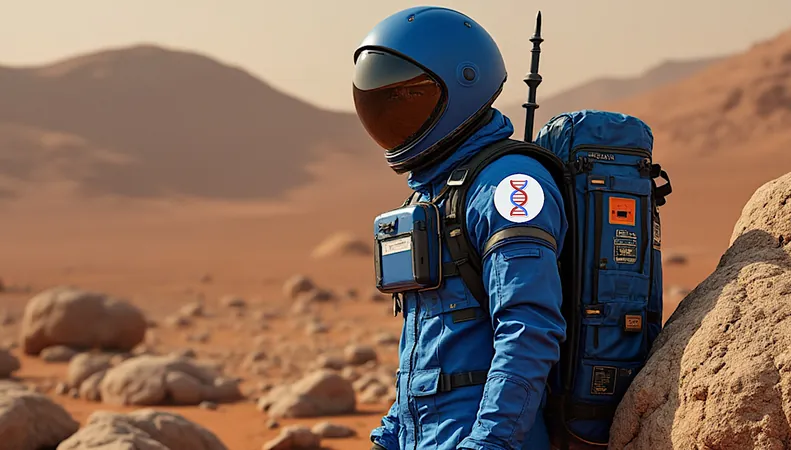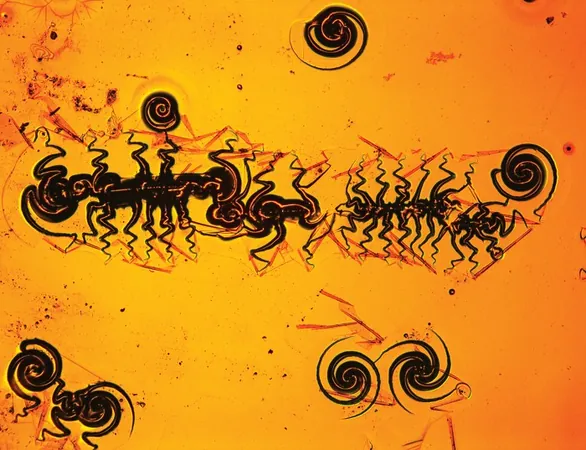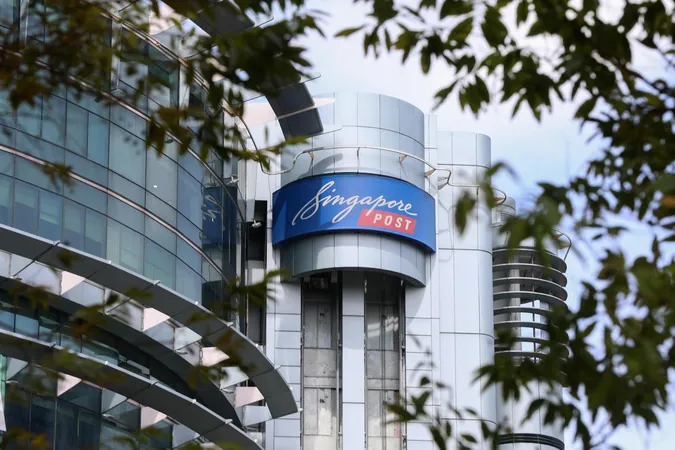
Groundbreaking Space Research: Insights from NASA’s Latest Findings on Health in Microgravity
2025-03-31
Author: Ming
Unpacking Spaceflight’s Impact on Bone Health
A pivotal study investigated the effects of 37 days of microgravity exposure on female C57BL/6J mice, revealing significant bone loss concentrated in weight-bearing skeletal sites. The implications of these findings for astronauts, especially during extended missions, could point to the necessity for improved countermeasures to mitigate bone density loss. Using the knowledge gained from these animal studies, researchers aim to develop effective strategies to preserve bone health in humans during deep space missions.
Neuroinflammation and Spaceflight
Another crucial piece of research examined the activation of the inflammasome, a protein complex involved in inflammatory responses, in the brains of spaceflight mice. This study raises important questions about the cognitive effects of prolonged exposure to microgravity and could lead to strategies designed to counteract potential neurological deterioration among astronauts.
Exploring the Risk-Taking Behavior in Space
Interestingly, researchers have also explored the impact of space radiation on the risk-taking predispositions of rats, identifying sex-dependent changes. This research could help us better understand behavioral adaptations necessary for survival in the unique environment of space, providing vital insights into astronaut selection and training.
Muscle Atrophy and Countermeasures
Kamal and Trombetta-Lima delved into mechanotransduction and skeletal muscle atrophy, highlighting how spaceflights can lead to muscle degradation. Their findings emphasize the need for effective exercise protocols to counteract muscle loss, suggesting a potential link between oxidative stress and muscle health degradation in microgravity.
Non-Invasive Monitoring Technologies
A study on monitoring core temperatures using non-invasive sensors brings exciting developments in astronaut health management. By enhancing our understanding of how to effectively monitor and maintain health in space environments, NASA aims to safeguard the well-being of astronauts during future missions.
Addressing Challenges in Proximity Operations
In terms of spacecraft operation, innovative research focused on the impact of orbital dynamics on fuel efficiency during proximity operations. This study solidifies the need for advanced trajectory planning and suggests that better optimization could lead to more efficient missions in crowded space environments.
The Importance of Color in the Space Station
A novel study explored the role of color in ensuring astronaut comfort within experimental modules. Adjusting color schemes to promote visual comfort may enhance astronauts’ functionality and mental well-being during missions, thereby affecting their overall performance.
Protecting Astronauts from Cosmic Radiation
Research assessing shielding materials against galactic cosmic rays (GCRs) emphasizes the critical challenge of protecting astronauts from radiation exposure during long-duration missions. Monte Carlo simulations highlighted the importance of evaluating shielding strategies, a key factor for future missions to Mars and beyond.
Conclusion
As NASA pushes the boundaries of space exploration, these studies underscore the ongoing commitment to understanding and protecting human health in extreme environments. With each discovery, researchers may unlock new methods to enhance the wellbeing of astronauts, allowing for safe and effective exploration of the final frontier. As we prepare for the next generation of space missions—potentially including a return to the Moon and beyond—we are left to wonder: what other groundbreaking insights will NASA discover next? Stay tuned for updates on this frontier of science and exploration!



 Brasil (PT)
Brasil (PT)
 Canada (EN)
Canada (EN)
 Chile (ES)
Chile (ES)
 Česko (CS)
Česko (CS)
 대한민국 (KO)
대한민국 (KO)
 España (ES)
España (ES)
 France (FR)
France (FR)
 Hong Kong (EN)
Hong Kong (EN)
 Italia (IT)
Italia (IT)
 日本 (JA)
日本 (JA)
 Magyarország (HU)
Magyarország (HU)
 Norge (NO)
Norge (NO)
 Polska (PL)
Polska (PL)
 Schweiz (DE)
Schweiz (DE)
 Singapore (EN)
Singapore (EN)
 Sverige (SV)
Sverige (SV)
 Suomi (FI)
Suomi (FI)
 Türkiye (TR)
Türkiye (TR)
 الإمارات العربية المتحدة (AR)
الإمارات العربية المتحدة (AR)